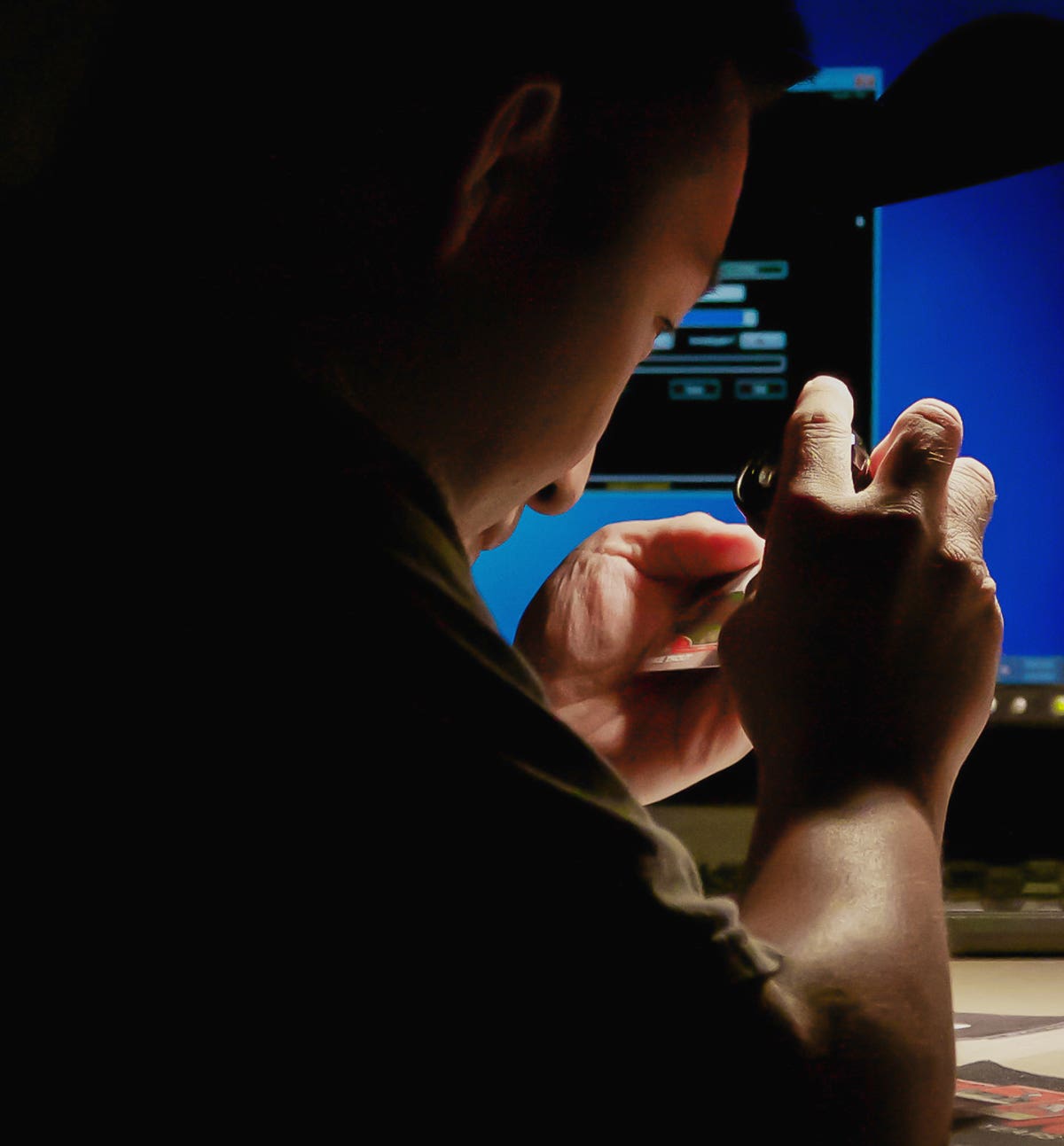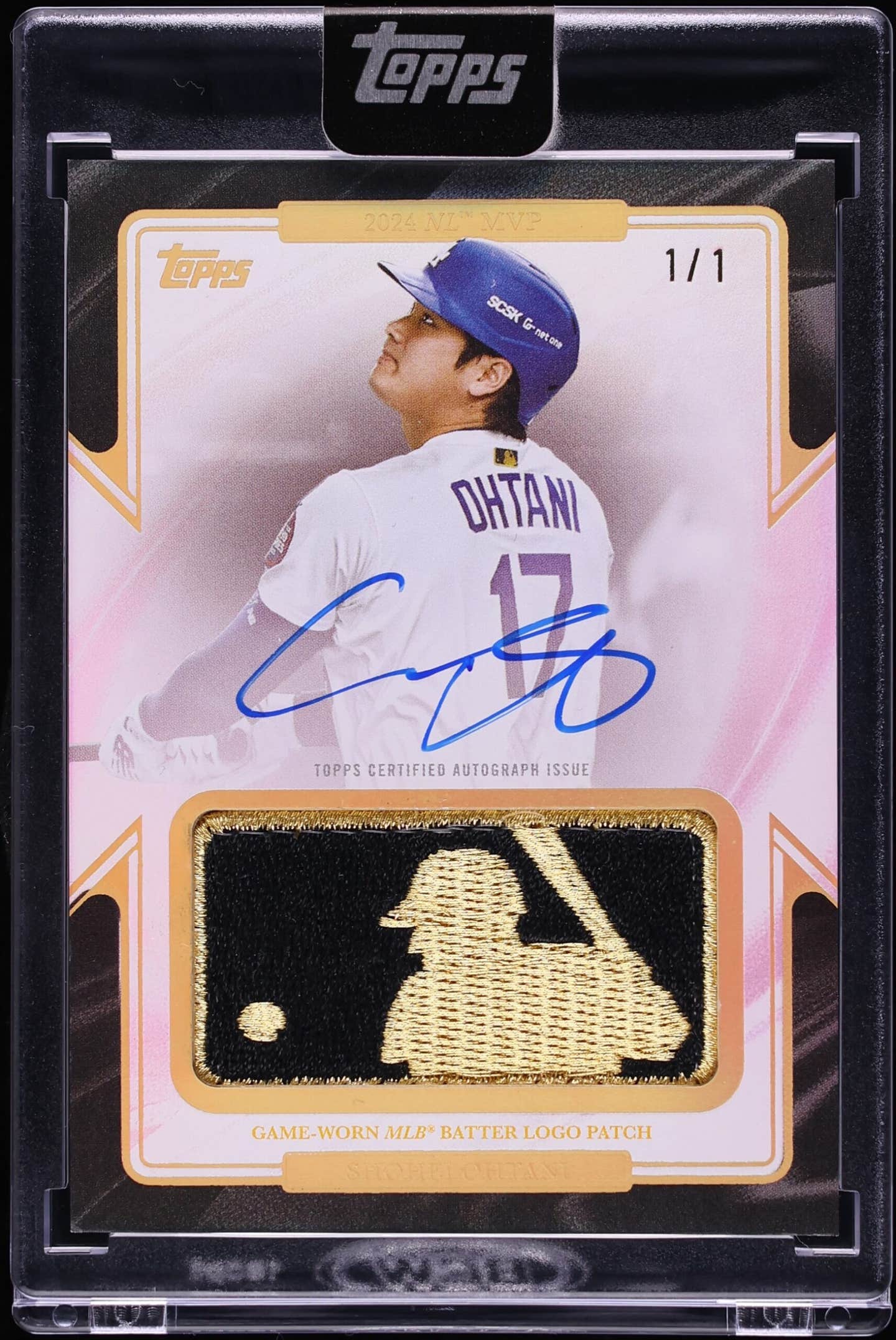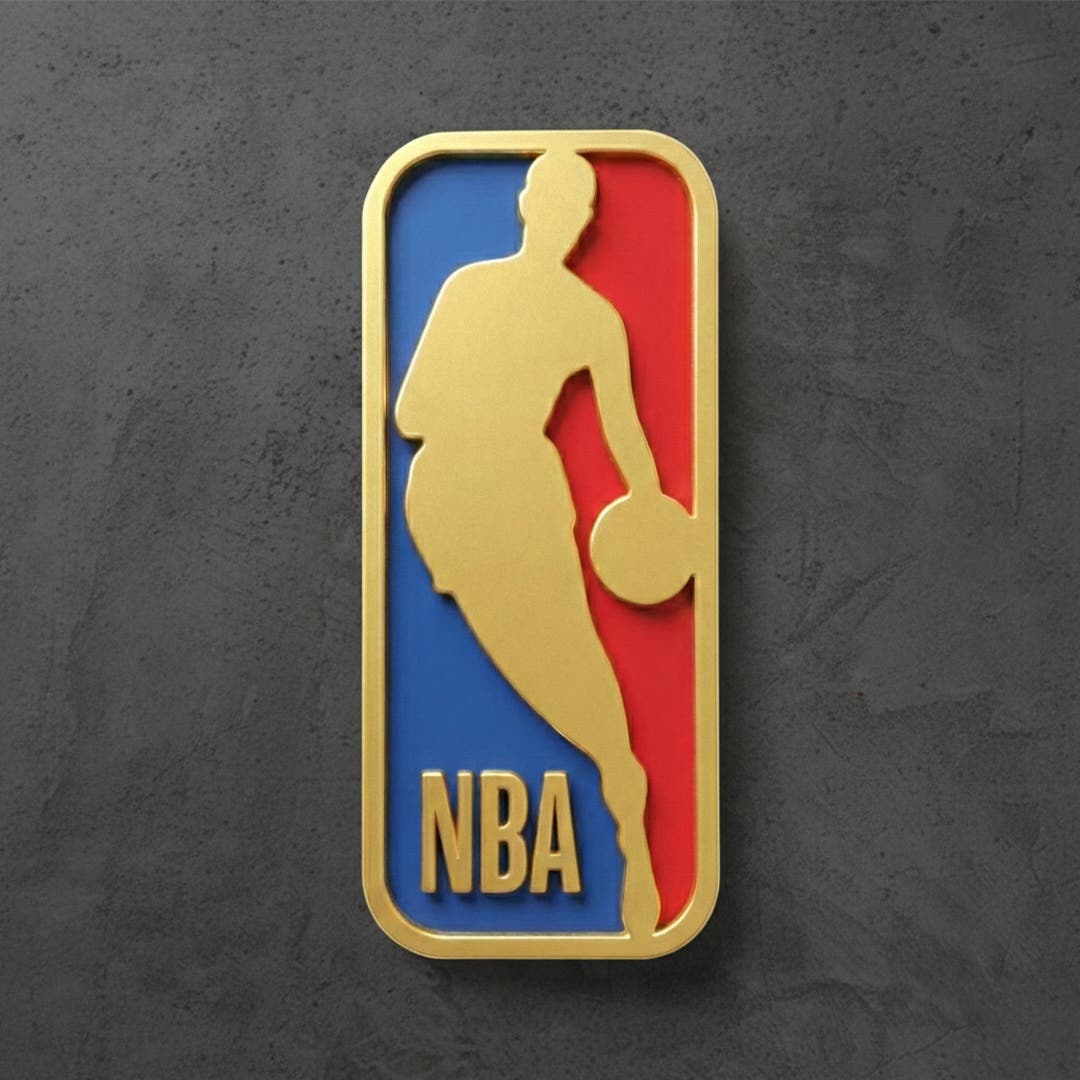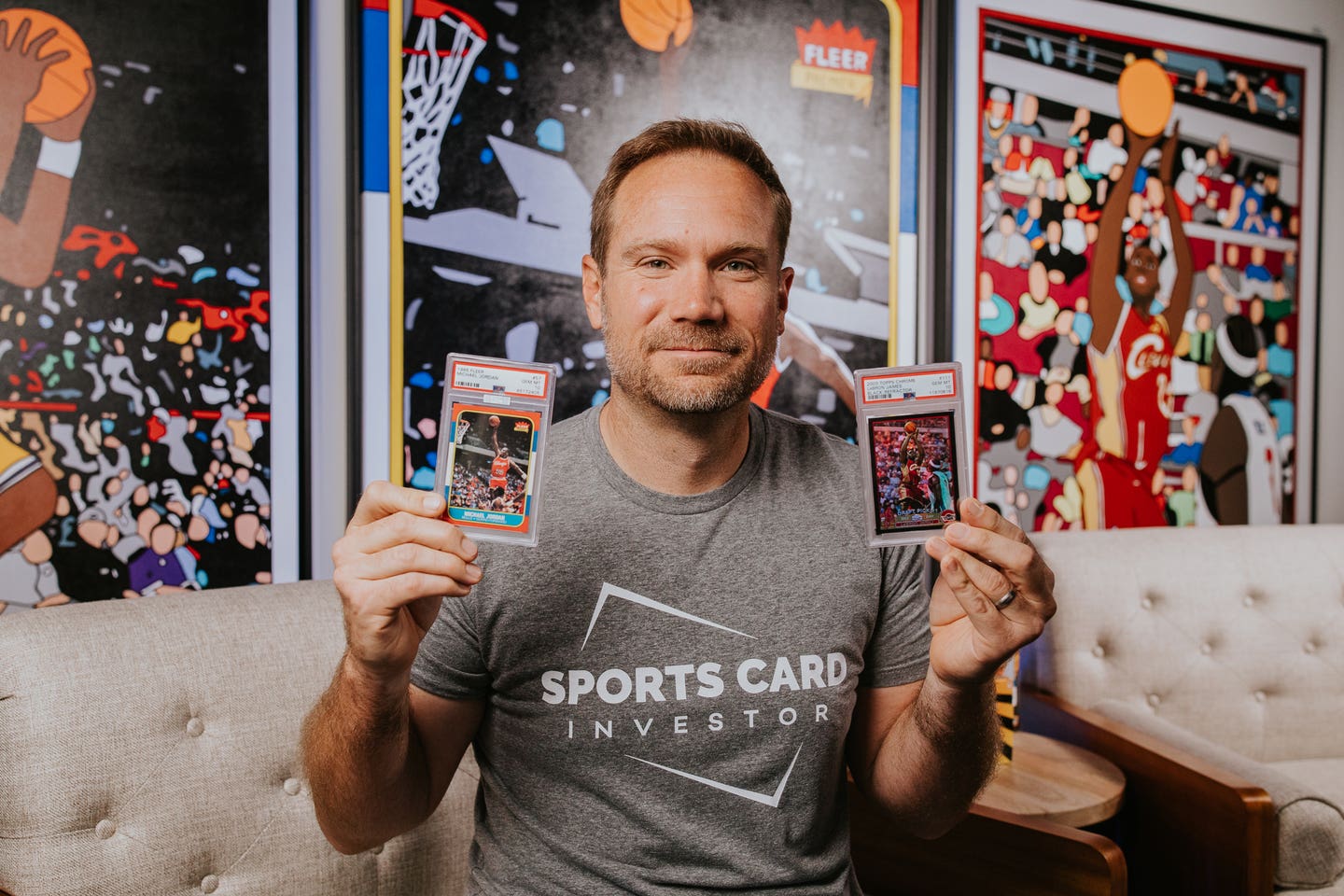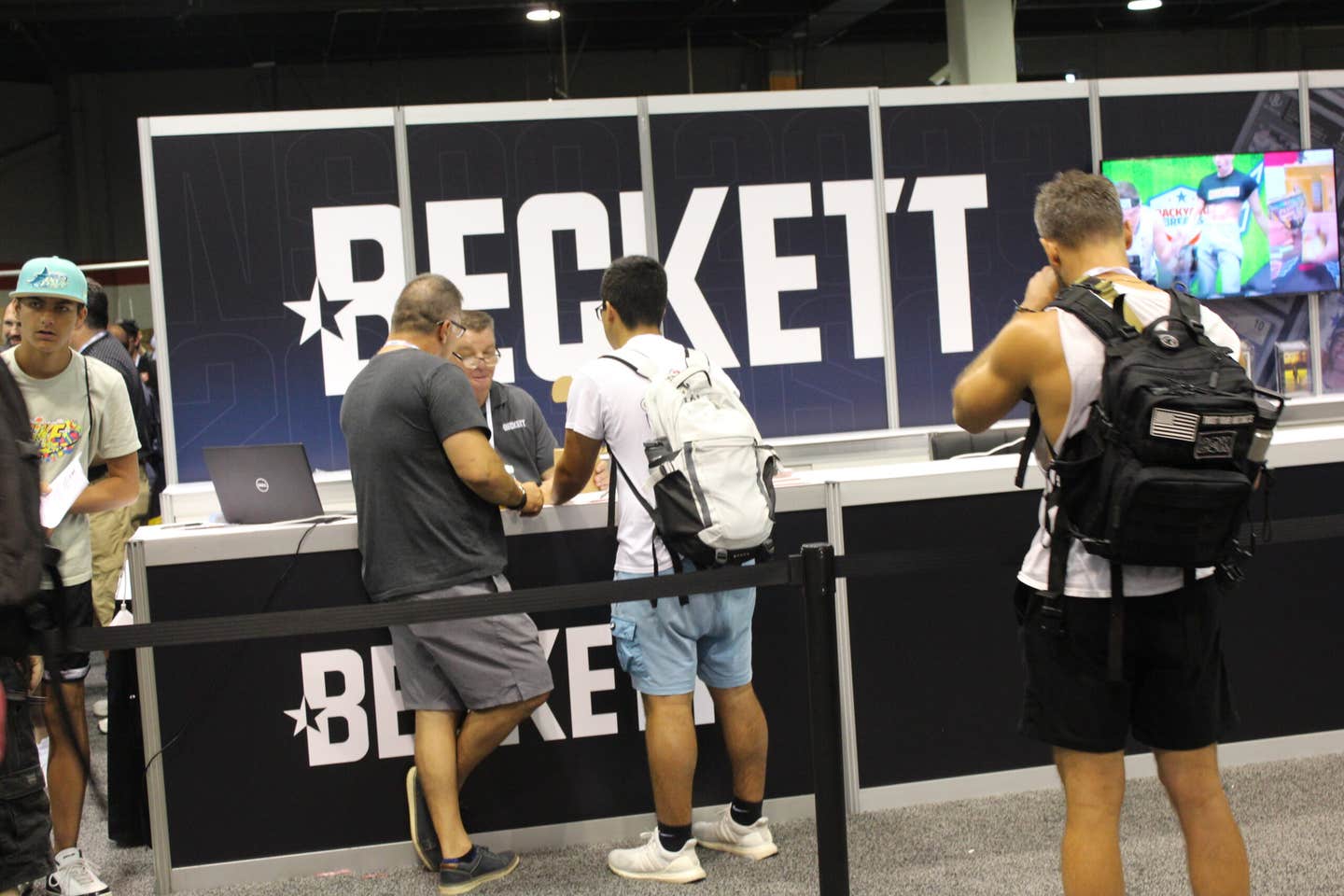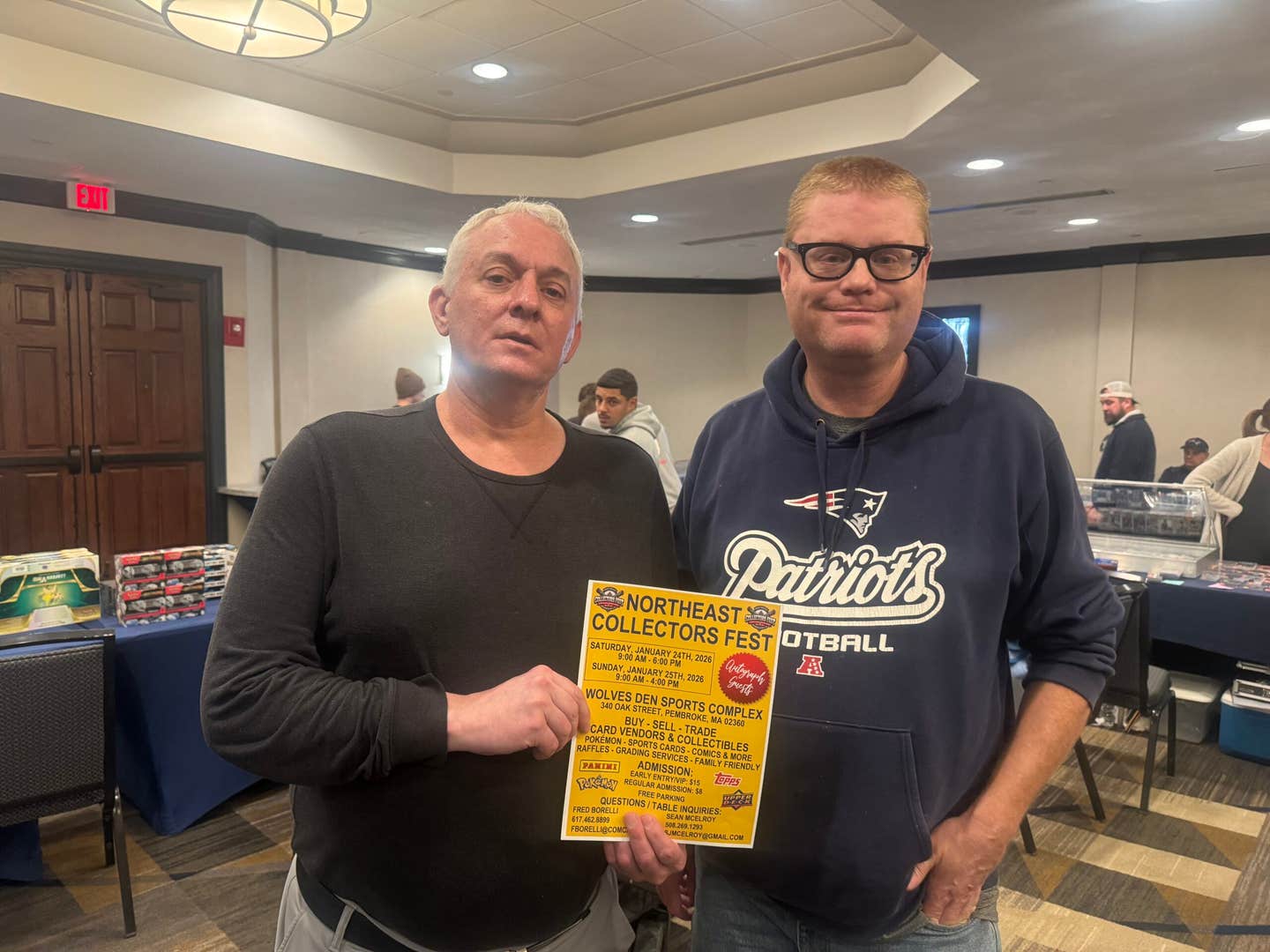News
Little League World Series: Playing Ball on the Big Stage
By Paul Ferrante
Chances are that if you’re a baseball collector, you had at least a passing experience with Little League baseball. Some of you, like myself, might have used it as a stepping stone to Babe Ruth, high school, Legion ball or beyond. Others found out that, although we would love the game forever, a future career wasn’t necessarily in the cards – no pun intended!
Back when I was of Little League age, my town organized teams through a draft, which was held after a “tryout” day where the coaches watched as pint-sized hopefuls hit, threw and ran. I remember it as being very simple and quick. Then, boom, you were assigned to a team, hopefully with some of your buddies, and practice began. I don’t recall anyone being turned away, but those recollections are fuzzy – it was the late-’60s, after all.
Today, it’s a whole new ballgame. First there’s t-ball, then the level where coaches pitch to the batters. Everybody has to play, and kids get moved around all over the field to experience different positions. Finally, the players themselves are ready to pitch.
Having fun and learning (not winning) is emphasized, and everybody is awarded some kind of trophy or memento at season’s end. I got to follow my own nephew Nicholas’ journey through Little League until he decided to give it up at age 12 or 13, though he was fairly talented. There were many times over those years where I wondered if I was watching the same game, as its organization and philosophy seemed to have changed so much from my time – some for the better, some not.
You can understand my interest, then, when one of my middle school seventh grade students, Chris Drbal, went on the ride of a lifetime in the summer of 2013 as his Westport, Conn., ballclub made it all the way to the U.S. championship game of the Little League World Series in Williamsport, Pa.
This is not only because Chris was an honor roll-level student in my class whose quiet demeanor (when I was around, anyway) set him apart somewhat from the normal seventh-grade hijinks of his cohorts; there was more to it than that. First, though I knew he loved baseball, I never realized he was that good of a player. Second, the entire town of Westport, where I teach, got caught up in the mania of the team’s march to the LLWS, and the boys, as I saw it, were exposed to a level of celebrity, scrutiny and pressure unlike any I experienced all the way through college athletics. Finally, to me, the Little League World Series had always been a low-key tournament whose final game was broadcast on ABC around Labor Day. It was a signal that summer was coming to an end and another year of school was around the corner, a slice of Americana staged in a little town in Pennsylvania.
Boy, was I in for a rude awakening.
Before sitting down with Chris and his parents, I decided to read up on the Little League World Series and its history, as well as its venue, Howard J. Lamade Stadium (I am, after all, the “Stadia Collector”) and evolution. So here are the basics.
LLWS background
The tournament is for kids aged 11-13 and was originally called the National Little League Tournament. It was first held in 1947 and has always called Williamsport home. Since then it’s become a worldwide affair. There are 16 teams involved in tournament. In the summer months leading up to it, Little Leagues from around the world select All-Star squads from their leagues. They compete in district, sectional and/or divisional regional play. In the U.S., advancement may be determined by pool play, double or single-elimination. It breaks down to eight regional tournaments whose winners advance to Williamsport. Other countries have varying national tournament setups. You end up with eight U.S. teams and eight International. Starting in 2010, round-robin play was replaced by a double-elimination bracket in each pool, whose winners would advance to single-elimination U.S. and International games. Then in 2011, this format was modified yet again, with the eight U.S. teams in one bracket and the eight International in another. The championship games for each bracket, as well as the World Championship game, are single-elimination. Each team plays a minimum of three games, with a “crossover” U.S.-International consolation game.
Overall, Taiwan has won the most championships (17). The U.S. has 33, divided among the regions. Teams from California have won it seven times, and my current home state of Connecticut is tied with Pennsylvania and New Jersey at four wins apiece. (Connecticut’s last win came in 1989, with the team from Trumbull – most notable for standout player Chris Drury, who is now a star in the NHL).
Speaking of former Little League World Series standouts, check out some of these names: Wilson Alvarez, Jason Bay, Derek Bell, Billy Connors, Todd Frazier, Charlie Hayes, Carney Lansford, Jason Marquis, Lloyd McClendon, Boog Powell, Colby Rasmus, Gary Sheffield, Jason Varitek, Rick Wise (MLB); Gail Gilbert, Turk Schonert, Brian Sipe (NFL), Ray Ferraro, Stéphane Matteau and Pierre Turgeon (NHL).
As far as the ballpark, Howard J. Lamade Stadium was built in 1959 and holds 40,000 people, including the famous outfield grassy slope. It is two-thirds the size of a MLB park, with 60-ft. base paths, a 46-ft. mound and 225-ft. fences. Lights were added in 1992. A second site, Little League Volunteer Stadium, was built in 2000-01 to accommodate double-elimination games only. It seats 5,000 and, like Lamade Stadium, has a symmetrical outfield (225-foot) fence.
Growth of the LLWS
Now, of course, this is all history, facts and figures, most of which you can learn by visiting Wikipedia or some other research engine. But what really made the Little League World Series hit the big time is the explosion of media coverage. As previously mentioned, for years (beginning in 1963) only the championship game was televised.
But since then, layers of games have been added so that now you can find games on ABC, ESPN, ESPN2 and ESPN3D. All you have to do is go on the LLWS website to see that this has become big business, including an online LLWS store where you can purchase banners, caps, patches, pins, programs and just about anything else related to the tournament.
But what really blew me away was the amount of attention being paid to the ballplayers themselves. For instance, when I clicked on Chris’s Westport club, I got their team stats and schedule, a team photo, individual roster picture profiles where you can click on the kid to get his tournament stats (as well as a spray chart!) and a minute-and-a-half video in which the player introduces himself and then displays his hitting technique in the batting cage and fielding skills, as well. And let’s not forget the scouting report. Chris’s offense of strengths are described as “athletic setup, aggressive with quick hands, solid barrel accuracy.” Defensively, (first baseman) it reads “quick active feet, surehanded, works low to baseball.”
So there I was, wondering, “How does a 12-year-old kid find the wherewithal to focus on playing when all of this hoopla is swirling around him?” It was time to find out. For the sake of clarity, I’ll differentiate between Chris’s responses and those of his parents, John and Lisa.
Sports Collectors Digest (SCD): How did you come to be on the Westport team?
Chris Drbal (Chris): For the past three seasons, our coach, Tim Rogers, has formed a travel team called the Seals from kids off our town Little League teams. So I’ve played with or against everyone on the team. It’s different in that some teams we played in the tournament drew their players from a bunch of towns in an area. All our guys were from Westport.
SCD: I know the 2013 LLWS site has the bracket breakdown for each finalist, but tell me your recollections about winning your Region.
John and Lisa (J&L): They first had to get through the District, which was probably the most difficult to win, because it features strong clubs like Fairfield and Trumbull. And, being an affluent area, many kids have personal coaches who they train with year-round. Our goal for this season was to just win the District. We’d lost last year to Fairfield.
Then it was on to the Sectionals. We beat Edgewood and Orange, even though we faced a pitcher with a really good curve ball. Our coaches pretty much discourage the kids from throwing curve balls, but many pitchers they faced in tournament play were throwing them.
SCD: You’re not a really big guy, so how did you end up at first base in the tournament?
Chris: I hurt my elbow during the spring while playing shortstop, so my coach moved me to first. I alternated between there and pinch runner. The rule in the tournament was that you had play at least two innings at a position.
SCD: What came next for the team?
Chris: The State round was held in Southington, and we won that by sweeping the best two out of three from Cochinhaug. From there it was on to Bristol for the Regionals.
J&L: That was tough on all of us because Chris had never really been away from home. There we were in the bleachers after the kids had just won the States, and we were handed folders outlining the procedures for the Regional round: Where the kids would be quartered, practice and game schedules, everything was all planned out.
Chris: We stayed in dorms near the ballpark. It was a complex with two teams in each building. We were in the same dorm with Vermont. There was one big team room with bunk beds (11 players) and another one for the coaches.
J&L: They were trying to get the kids ready for the next round as far as what lodging and the daily routine would be like. The kids were more or less sequestered and supervised at all times.
Chris: We’d be woken up at 7:30 by our “aunts,” two female volunteers who are teachers during the year, and they’d escort us to the cafeteria for breakfast. Then it was practice for two hours, hang out until our game or take some more BP. After the game, we’d usually have some pizza and then go right to bed.
(Author’s note: Westport went 6-0 in the Regional round, defeating in order: Vermont, Maine, New Hampshire, Massachusetts, Maine again, then Rhode Island in a nine-day span).
J&L: They won the game (1-0) versus Rhode Island on a Saturday night, and we were told to have them packed and ready to go to Williamsport the next morning. We had been shuttling back and forth to Bristol (90 minutes away) for the whole round, but now we had to follow the team to Williamsport. In Bristol, parents weren’t allowed into the complex, and security was very tight. But the “aunts” would help us get hold of their daily laundry so we could keep them in clean clothes. They washed the kids’ uniforms, however.
Chris: There was a swimming pool in the complex but we never used it, because our “aunts” told us that every team they’d ever had that made it to Williamsport hadn’t gone swimming. So we didn’t, either.
SCD: Did any of the boys get homesick?
Chris: I did the first day, a little bit; maybe some of the other guys too, but then the games started and we got used to it.
SCD: You win on Saturday night and the next morning you’re on your way to Pennsylvania?
Chris: I couldn’t believe it when we arrived. It happened so fast, it was like a dream. Then when we got there they started giving us all this stuff (now we had “uncles” as chaperones) and all new equipment. We got fitted for our Regional Champions uniforms and were allowed to pick out a brand new bat. We got cleats and batting gloves, everything.
SCD: When did it hit you how big this thing was?
Chris: Honestly, not until the moment it ended. Until then there was no time to think about it.
SCD: I understand there was a parade before the tournament began?
J&L: They have a big parade through downtown Williamsport the day before the first game. It was over three hours long, and it looked like the whole town turned out to see it. This is their big event, and they really take pride in it. Westport was on a float with the team from Panama.
SCD: You got there on Sunday, but the parade wasn’t until Wednesday. What did you do until then?
Chris: We worked out and got a tour of Lamade Stadium. Then we were individually videoed hitting in a batting cage under the stands, and then fielding in the stadium. There were practice fields we had to walk to for our team workouts. The teams were really spaced out.
SCD: How close were you to other teams in the living quarters?
Chris: We were above Chinese Taipei, but the buildings were connected. We’d go to the game room and hang out with the Taipei guys.
SCD: How did you communicate?
Chris: I have Google Translate on my phone. I actually became friends with the Taipei catcher, Chen Hsunle, and I traded a pin for one of his batting gloves. We took a photo together.
J&L: An interesting thing is that one of the International finalists was the Czech Republic, and their town is where Chris’ ancestors are from. So they recognized the name Drbal on our jerseys at the parade. We even came home with a Czech Republic pin. It was a nice connection.
SCD: What was the first game like?
Chris: It was a night game, and the stadium was packed. We only get about 40 people to our games in Westport, so this was incredible. We beat Nashville, Tenn., and I had a good game – a single and two runs scored, including the winning run.
SCD: Tell me about Lamade Stadium.
Chris: They take such great care of it. Five hours before the game they would smooth the field, and then again right before the game. It almost looked like the grass was artificial, it was so perfect. I heard they only use it for this tournament.
(Author’s note: Chris did, however, manage to take a clump of grass and cup full of dirt home as a souvenir. A man after my own heart!)
SCD: Did you have a good batter’s eye, or did those crowds running around on the famous grassy embankment past the outfield wall distract you?
Chris: I just focused in on the pitcher. You just had to block out the noise and everything else going on. When I was on deck, though, I’d just look out there and think this is amazing.
SCD: You always see the crowd shots on TV with the parents and supporters. Were the spectators well behaved?
J&L: Some of the parents got intense, more so the Americans than the International fans. Nashville was pretty boisterous. Chinese Taipei’s fans had all these organized chants going, which was interesting.
SCD: Did you become close to any of the other American teams?
Chris: We didn’t do that much socializing. The Washington State and California teams hung out together at times.
SCD: What struck you as interesting about the way the International teams played ball?
Chris: Well, when Chinese Taipei was practicing in the cages, they had their coaches throwing full speed, with a catcher behind the hitter, which I thought was a little dangerous. The coaches seemed to be really hard on them. And I remember Japan working out at 9 p.m. under the lights and their outfielders practicing going over the fence to make catches. In the games, I couldn’t believe how the Asian hitters could “step in the bucket” at the plate and still make good contact. Unfortunately, the only time we played an International team was in the consolation game (Westport lost to Mexico, 15-14) and it was pretty casual. By that time, we were out of pitchers so we used a lot of guys. Whenever Mexico had a guy reach first base, I’d talk to him in Spanish, which I take school. It was funny, because you know how teachers always say, “You’re going to use this someday?” I never thought I would get to use my foreign language in the Little League World Series!
J&L: What we remember was the opening ceremony. They had all the teams on the field; they played “It’s a Small World,” and it was touching.
SCD: You came home with a load of pins (more than 25). Which is your favorite?
Chris: The one that’s the plain Little League World Series pin, with no advertising. But I got so many more trading with guys on the other teams. Our team started getting them as far back as the Regionals, so by the time we got to Williamsport, we had a bunch to trade. Some of the teams had pretty interesting ones.
J&L: The parents were staying in the Genetti Hotel in town, one of the older establishments. There was a ballroom in the hotel where you could trade pins. Every night during the tournament the room was mobbed. There was also a tent outside Lamade Stadium where you could buy or trade pins. Some people were walking around with ball caps covered with pins. There was also a LLWS gift shop inside the ballpark that had anything you wanted, from replica caps and jerseys to baseball cards of the teams, programs and collectibles. It was incredible how they had to keep replenishing their inventory during the week.
Chris: They also had regular baseball cards at the gift shop. My teammate (star pitcher) Chad Knight taught me how to feel the outside of the card packs to see if there was a jersey card inside. He got a Yu Darvish card that week.
(Author’s note: The Westport, Conn., squad reached the U.S. Championship game by defeating Nashville, Tenn., 3-2; and Sammanish, Wash., 9-7 and 14-13. They were defeated by Chula Vista, Calif., in the championship game, 12-1 before losing the consolation game to Mexico.)
SCD: Besides acquiring pins and other mementos, what was going on there that our collecting readers would want to know about?
Chris: Well, photographers were following us everywhere, taking shots during practice and games. One time we were all having breakfast on the balcony of our dorm and we looked down and a bunch of photographers were taking pictures of us eating!
J&L: There was a tent outside the stadium where parents and family could go, and you’d give them the name of your child and they’d pull up dozens of shots that you could purchase or have made into a variety of glossy prints, oversized baseball cards, posters or whatever. It was a big business.
SCD: What about autographs?
Chris: That was the most unbelievable of all. My older brother and I love going to MLB team hotels and ballparks and getting autographs as a hobby. Well, after the first game, our whole team had to sign like 20 baseballs for charity. Since security was so tight in the complex, people were after us to sign the minute we stepped outside. If we were sitting together in a sectioned off area in the stands to watch one of the other games, people would pass stuff over to us to sign. And if we were just walking around the park, we had both boys and girls coming up to us to autograph their hats, programs and baseballs, sometimes like 20 at a time. Even without our uniforms they knew who we were, either from our security passes that we had to wear around our necks all the time or our faces, once we’d been on TV a couple times. At one point they had to change our walking route to the practice field from the dorm because we were being delayed by autograph seekers.
J&L: They were like rock stars. Girls wanted to take photos with them, and a couple even got their hands on the boys’ cell phone numbers and started texting them. We found that a little scary.
SCD: With all this going on, could you relate to MLB players whom you’ve asked for autographs?
Chris: Totally. For us, it was kind of fun because it was only a short time, but even so it got old after a few days. The MLB guys have to go through it every day, all season long. Now if a player turns me down for an autograph, I can understand it.
SCD: Did the players get to interact with their families much?
J&L: We were there from August 14-25. You didn’t know how long you’d be staying because it all depended on how far the team went in the tournament. But the people at our hotel were great, as was everyone we met in Williamsport. The coaches wanted to keep the kids together, and we had a tradition of a “good luck” pasta dinner the night before games. A local woman actually volunteered to cook pasta for the boys. And if we went shopping in town, we were given discounts for being Chris’ parents. So we did get to see him, although we weren’t allowed in the players’ complex.
SCD: What was the feeling on the club after losing the U.S. Championship game?
Chris: Chula Vista just had more pitching depth than us. We should have played better, but they deserved to win. Some guys were sad, even crying. But I was like, “Hey, why are you so down? We went farther than we ever thought we would.” The thing was, it was over so suddenly. We didn’t even get to watch the World Championship game. (Author’s note: Japan defeated Chula Vista, 6-4.) We lost to Mexico in the consolation game, packed up and left.
SCD: But the story doesn’t end there, right?
J&L: We helped the kids get on the bus and then took off in our cars, so we got home before them. Well, a police escort met their bus at the Connecticut state line and brought them to the Westport train station parking lot, where a crowd was waiting for them; from there we all went to nearby restaurant for a welcome home celebration. A parade was scheduled for the next day, and it was like the entire town showed up – more than 3,000 people.
Chris: They put us on a float, and we were waving to the crowd. When it ended we were signing autographs, for the last time. I was happy to be home, but in a way I was sad because it was over. Who knows if I’ll ever get another chance? School had already started, and the next day there I was, sitting in class. It was weird.
J&L: But it still wasn’t over. Gov. Malloy of Connecticut invited the team to the governor’s mansion for a dinner, and he made sure to spend time talking to each boy. Then, the Yankees had them to the stadium as honored guests, as did the Red Sox at Fenway.
Chris: We were able to stand outside the dugout and get autographs and talk to you guys like Curtis Granderson and Robinson Cano. Then, for the national anthem, we stood next to the guy who played our position. I stood next to Mark Reynolds at first base. The Yankees set us up and our families – tickets, food, everything. At Fenway, it was different in that for the anthem we went to our positions without the Red Sox players. It was cool being out there all alone.
J&L: Finally, ESPN had the team come up to Bristol, where it all began, as guests on SportsCenter. It was quite a summer.
To say the least. You, fair readers, can be the judge on this one. Chris, batting leadoff, played well in the series (five runs scored, .364 OBP) and was involved in some memorable plays, as his small-town club went toe-to-toe with the big boys and almost pulled off a Cinderella ending. He came home with a treasure trove of collectibles – and memories – that will last a lifetime.
But is the Little League World Series experience too overwhelming for an 11-13 year-old? It would have been for me at that age. The thing is, kids from the 1960s and 2013 live in different worlds. Thankfully, it doesn’t seem to have changed Chris that much. And it is kind of neat to realize the one link in the continuum that holds the generations together is the game we love – baseball.
Readers can contact Paul Ferrante by e-mail at pnferrante21@optimum.net. You can also visit his website, paulferranteauthor.com, for updates on his baseball writings and the T.J. Jackson Mysteries series.



